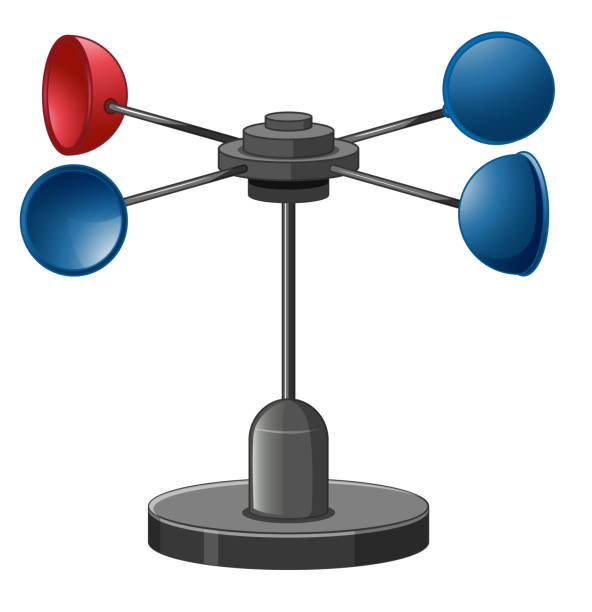Checking Out the Functions and Benefits of Anemometers for Weather Condition Lovers and Professionals
Anemometers stand as critical devices in the world of weather condition tracking, satisfying both fanatics and skilled experts alike. These gadgets use a window into the dynamic world of wind patterns and rates, providing important data for meteorological evaluation and projecting. From cup anemometers to sonic anemometers, each type brings its distinct set of advantages and applications, shedding light on various facets of climatic conditions. As we delve into the features and advantages of anemometers, a much deeper understanding emerges not only of dominating climate sensations but also of the more comprehensive ramifications for markets like wind energy production and ecological study.
Relevance of Anemometers in Weather Condition Monitoring
Anemometers play a vital duty in weather condition monitoring by giving precise measurements of wind rate, helping in projecting and understanding weather patterns. These tools, ranging from standard cup anemometers to modern ultrasonic anemometers, are essential for meteorologists, researchers, and climate enthusiasts alike. By determining wind rate, anemometers help in establishing the intensity of weather condition sensations such as storms, tornadoes, and tornados. Furthermore, they offer beneficial data for air travel, maritime procedures, and various sectors that are sensitive to wind conditions.

Sorts Of Anemometers and Their Applications
The most typical kinds of anemometers consist of mug anemometers, vane anemometers, hot-wire anemometers, and ultrasonic anemometers. Mug anemometers are composed of 3 or 4 cups mounted on straight arms that turn with the wind, determining its speed. Vane anemometers, on the various other hand, utilize a freely revolving vane to line up with the wind direction, supplying both wind rate and direction dimensions.
Mug anemometers are appropriate and durable for basic weather monitoring, while vane anemometers are favored for directional measurements. Ultrasonic anemometers are non-intrusive and use high accuracy, often used in research study and specialized weather condition surveillance applications.
Benefits of Making Use Of Anemometers in Forecasting
In weather forecasting, the use of anemometers uses very useful benefits for improving the precision of weather condition forecasting. Anemometers measure wind speed and direction, giving crucial information for forecasting climate patterns. By including wind information into forecasting models, meteorologists can much better recognize the activity of weather systems, expect modifications in weather, and problem much more precise projections.
Additionally, anemometers play an important role in analyzing possible weather condition hazards. Checking wind rates assists forecasters predict extreme weather condition occasions such as cyclones, tornadoes, and winter months tornados with greater precision. This early warning system makes it possible for authorities to provide prompt notifies and implement needed safety actions, decreasing the threats to life and residential property.
In addition, anemometers help in maximizing renewable resource production. By assessing wind patterns, meteorologists can identify appropriate locations best site for wind farms and forecast energy outcome, adding to the efficient generation of wind power.

Anemometers in Wind Power Production
Provided the important duty anemometers play in providing exact wind data for weather projecting and risk analysis, their significance reaches the world of wind power manufacturing. Anemometers are essential instruments in the field of wind energy, where the measurement of wind speed and instructions is important for establishing the feasibility and efficiency of wind turbine setups. By precisely determining wind speeds at varying heights, anemometers assist enhance the placement and style of wind turbines to maximize power result.
In wind ranches, anemometers are purposefully positioned to accumulate real-time wind information that is made use of to examine the prospective power production of a site. This data is instrumental in determining the economic stability of wind power tasks and in projecting power generation to guarantee grid stability. Furthermore, anemometers aid in monitoring wind conditions to maximize wind additional resources turbine efficiency, avoid damage from high winds, and ensure the safety and security of employees operating check out here in the vicinity of wind generators.
Enhancing Climate Comprehending With Anemometers

Anemometers play a key duty in boosting our understanding of microclimates. These local climate condition can differ dramatically from more comprehensive local projections, making it crucial to have exact information for certain areas. anemometer. By purposefully putting anemometers in different places, researchers can gather detailed information on just how wind behaves in different terrains, city atmospheres, or bodies of water
Furthermore, anemometers contribute to boosting climate forecasting models by giving real-time information on wind habits. This information is specifically valuable for predicting serious weather condition events, optimizing farming methods, and sustaining industries like air travel and maritime navigation. On the whole, anemometers are vital instruments that allow us to dig deeper right into the complexities of weather systems, eventually resulting in even more better-informed choices and precise forecasts.
Verdict
Finally, anemometers play a crucial function in weather tracking and projecting by determining wind rate and direction. They are crucial tools made use of by weather lovers and specialists to collect accurate information for forecasting climate patterns and examining prospective influences. Anemometers also have applications in wind energy production, additional highlighting their importance in both weather forecasting and renewable energy markets. Overall, anemometers add to enhancing our understanding of weather sensations and improving forecasting abilities. anemometer.
From cup anemometers to sonic anemometers, each kind brings its one-of-a-kind collection of advantages and applications, dropping light on numerous facets of atmospheric conditions. These instruments, ranging from conventional mug anemometers to modern-day ultrasonic anemometers, are essential for meteorologists, researchers, and weather enthusiasts alike. The most common types of anemometers include cup anemometers, vane anemometers, hot-wire anemometers, and ultrasonic anemometers. Cup anemometers are robust and appropriate for basic weather condition tracking, while vane anemometers are preferred for directional dimensions. Anemometers are crucial tools in the area of wind power, where the dimension of wind rate and direction is critical for establishing the usefulness and performance of wind generator installments.